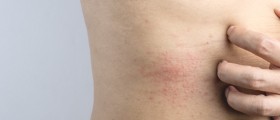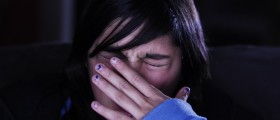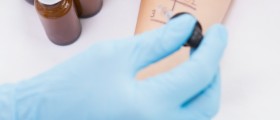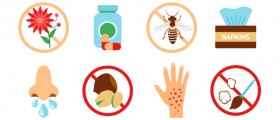
Formaldehyde is a chemical found in numerous products which are used almost every day. Apart from that, formaldehyde is essential for treatment of fabrics in textile industry, stiffening of lightweight nylons, waterproofing and moth proofing of fabrics.
Some people (who are generally predisposed to allergy) may develop allergy to formaldehyde. The allergic reaction occurs only if a person has been in a contact with the product containing formaldehyde and developed sensitivity to the chemical. In case of skin contact a person may develop contact dermatitis. Depending on the particular clothing which is worn the allergic reaction may affect different parts of the body. The allergic reaction can also occur if one has been exposed to formaldehyde fumes.
Symptoms of Formaldehyde Allergy
The symptoms basically depend on the form of formaldehyde that a person has been exposed to. In case of contact with the skin the person will experience skin reaction in a form of dermatitis or itchy skin and if formaldehyde has been inhaled the allergic person will develop a whole bunch of symptoms predominantly related to the respiratory tract.
Exposure to formaldehyde can cause dizziness, lightheadedness or even vertigo. Furthermore, after being exposed to the particular substance a person may suffer from nausea and vomiting. Shortness of breath is another common symptom of formaldehyde allergy. It develops after a person has been exposed to inhaling of formaldehyde. In severe cases exposure to formaldehyde can lead to coughing and bronchiospasm. An allergic reaction can also be in a form of burning sensation of the eyes, throat and tongue.
Treatment for Formaldehyde Allergy
It is essential for all the people who are confirmed to be allergic to formaldehyde to stay away from the allergen. They are not supposed to be exposed to formaldehyde at all. Formaldehyde allergy can be easily confirmed with a patch test. Even people who are not allergic to formaldehyde should reduce contact with the particular substance since formaldehyde is considered a very potent carcinogen.
In case an allergic person has been exposed to formaldehyde he/ she is supposed to flush the eyes or the exposed skin with water and in case the substance is ingested a person must seek for urgent medical attention. The actual treatment includes stop in further exposure to the allergen and further prevention of potential exposure. All people who are on daily bases exposed to formaldehyde and who are suffering from formaldehyde allergy (such as workers in the particular field) must be removed from the current position and transferred to another position where there is no exposure to the allergen. Even those who are not allergic but are contact with formaldehyde must be adequately protected with special equipment.

















Your thoughts on this
Loading...